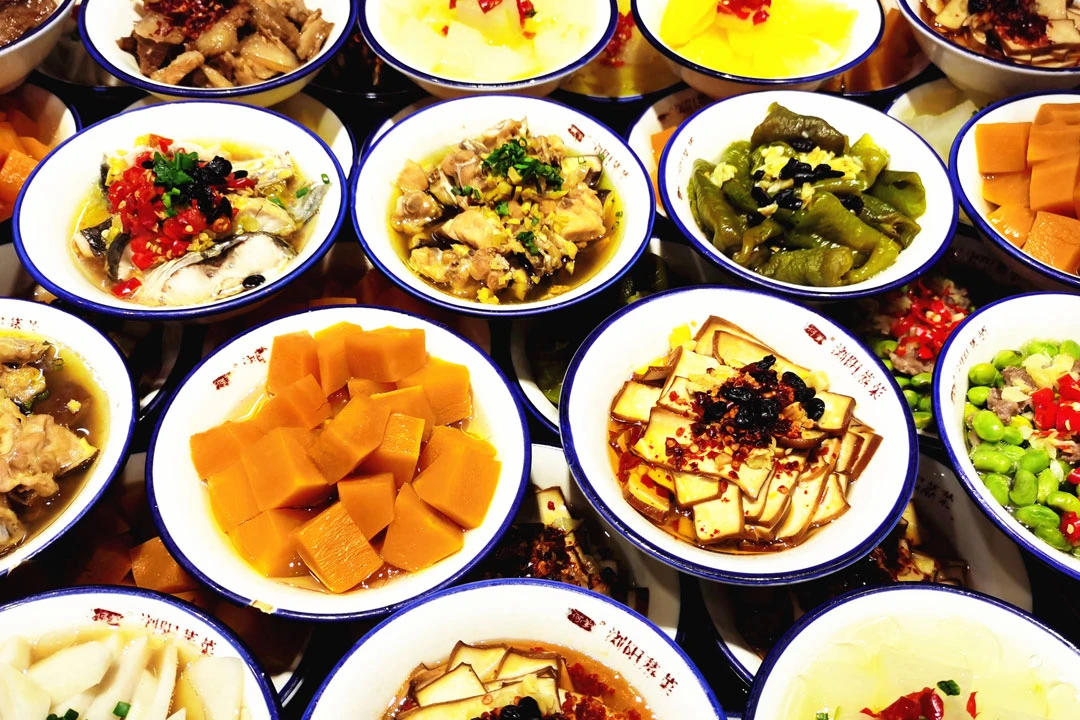From Artifacts to Appetizers: How Museums are Reinventing the Visitor Experience
In the heart of Changsha, capital of China's Hunan province, an unexpected culinary revolution is taking place. The Hunan Museum, long revered for its vast collection of historical artifacts, has embarked on a bold new venture: transforming its visitor experience through food. This innovative approach is redefining the role of museums in modern society, blending cultural education with gastronomic exploration.
The museum's newly opened dining area is more than just a convenient spot for hungry visitors to grab a bite. It's a carefully curated space where history comes alive on the plate. Five distinct culinary brands have taken up residence, each offering a unique perspective on Hunan's rich cultural heritage. From ancient steamed dishes to contemporary coffee creations, every menu item tells a story.
At the heart of this culinary experiment is the concept of "edible history." The museum has collaborated with local chefs and food historians to recreate dishes inspired by artifacts found in the famous Mawangdui Han Tombs. Diners can savor meals that echo those enjoyed by nobility over 2,000 years ago, served on plates adorned with Han dynasty motifs. This immersive dining experience allows visitors to engage with history through all their senses – sight, smell, and taste.

One of the standout offerings is the "Lady Xin Zhui Recommended Set," a meal that pays homage to the remarkably well-preserved mummy found in the Mawangdui tombs. The set includes white rice similar to what would have been consumed by the Han elite, along with steamed dishes prepared using traditional Hunan techniques. Each element of the meal, from the ingredients to the serving vessels, has been meticulously researched to ensure historical accuracy.
But the museum's culinary ambitions extend beyond mere historical recreation. Local food traditions are also given a place of honor. The East Row Cafeteria, a beloved Changsha institution, has brought its famous "scraped cold noodles" to the museum. This dish, recognized as intangible cultural heritage, represents the living continuity of Hunan's culinary traditions. By including such iconic local foods, the museum creates a bridge between past and present, allowing visitors to taste the evolution of Hunan cuisine.
A Taste of History: Culinary Innovation Meets Cultural Heritage
Innovation is also on the menu. The "Jun Xing Cafe," a unique concept developed exclusively for the museum, offers a fusion of Western coffee culture and traditional Chinese flavors. Visitors can sip on lattes infused with local rice wine or enjoy pastries that incorporate elements of Hunan's sweet fermented rice. These creative concoctions serve as a metaphor for China's ongoing cultural dialogue with the world, all encapsulated in a single cup or bite.
The museum's approach to pricing is as thoughtful as its menu design. Recognizing that cultural experiences should be accessible, the dining area offers meals at prices comparable to similar establishments outside the museum. This democratic approach ensures that the culinary program enhances rather than hinders the museum's mission of public education and engagement.
Beyond Exhibits: The Rise of Immersive Dining in China's Museums
The success of this initiative has not gone unnoticed. Other cultural institutions in Changsha and beyond are taking note, considering how they too might expand their offerings beyond traditional exhibits. The Changsha Bamboo Slips Museum, for instance, has launched a new exhibition with free admission, signaling a broader trend towards more engaging and accessible cultural experiences.
This shift in museum programming reflects a growing recognition of the power of multisensory experiences in education and cultural preservation. By allowing visitors to literally taste history, museums are creating more memorable and impactful encounters with the past. This approach also opens up new avenues for cultural institutions to generate revenue and remain relevant in an increasingly digital world.
However, the integration of dining into museum spaces is not without challenges. Balancing historical authenticity with modern tastes and dietary requirements requires constant innovation. There's also the logistical challenge of managing food service within institutions primarily designed for artifact display and preservation.
Despite these hurdles, the early success of the Hunan Museum's culinary program suggests that this model has significant potential. By transforming museums from passive repositories of artifacts into active spaces of cultural engagement, institutions like the Hunan Museum are paving the way for a new era of interactive learning.
As visitors leave the museum, many carry with them not just new knowledge, but also tangible reminders of their experience – perhaps a coffee cup emblazoned with Han dynasty calligraphy. These souvenirs serve as bridges between the museum experience and daily life, encouraging ongoing engagement with cultural heritage.
The Hunan Museum's culinary initiative represents more than just a novel approach to museum catering. It's a bold reimagining of what a museum can be in the 21st century – a place where history is not just observed, but experienced in the most visceral sense. As this trend continues to evolve, we may see a future where museums are as much destinations for culinary exploration as they are for historical education, creating richer, more immersive encounters with our shared cultural heritage.


